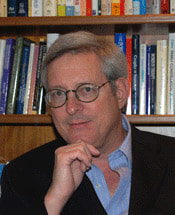|
There has been another major bombshell in the Kent State shooting case--this one following a year of startling disclosures about what apparently happened during at the university during an anti-Vietnam War protest on May 4, 1970.
Last year, less than a week after the 40th anniversary, Cleveland's Plain Dealer reported that two nationally renowned audio forensics experts studied a tape of the shootings and concluded there was an order "prepare to fire" issued just six seconds before the troops actually did. Five months later, the paper reported that one of the experts, Stuart Allen, had continued to study the tape on his own, focusing on a commotion he heard 70 seconds before Ohio National Guardsmen killed the four students. Allen further concluded that four additional shots were fired by Terry Norman, a part-time Kent State student and later a Washington, D.C. police SWAT officer, who was carrying a concealed .38 caliber pistol. Given that both Norman and the FBI long denied the gun had been fired, and that after initial denials Norman was ultimately discovered to have been an undercover photographer working for both the FBI and the campus police, questions were raised about whether Norman was just a loose cannon or part of the FBI's infamous COINTELPRO operation designed to "disrupt and destroy" radicals on the New Left. Now, Allen reports that by isolating even more sounds on the tape, he has been able to make out a second and actual order to shoot the students. Allen says he can make out these words: "Squad, fire." Allen's findings, of course, contradict every public statement Guard officials made and the sworn testimony of at least a dozen soldiers. At the 1975 wrongful death and injury trial every Guardsman at the scene from the senior officers to the lowest-ranking privates insisted every "shooter" individually made the decision to fire in self-defense, without receiving any orders from commanding officers. Allen suspects the killings may have been the culmination of "a perfect storm" of multiple coinciding events. Given all the other contributing causes, he is probably right. However, I personally doubt that the bullets Norman allegedly fired could have precipitated the Guards' volley. Even if Norman fired four times, as Allen reports, the troops did not return fire in his direction (which would have directly behind them and off to their side) . Instead, they fired directly into a crowd of protestors off to their distant right. In fact, all but one of the 77 soldiers who faced the students seemed oblivious to Norman's presence on Blanket Hill. A man with the gun was not even mentioned in virtually all of the troops' after-action reports or in their statements to the FBI. Moreover, none of the troops fired their weapons until after 70 seconds had passed. Perhaps most telling, no soldier tried to pin the blame on him at the 1975 wrongful death and injury trial, even though Norman would have made a perfect scapegoat. Still, Norman's behavior on May 4 remains highly suspect. In addition to the claims that he fired his gun, there was disturbing testimony--confirmed by Norman himself--that he positioned himself in between the protestors and the Guardsmen minutes before the shooting broke out and that he threw rocks at the students. Norman swore under oath that he only threw two or three rocks, but the student involved in an altercation with him, Tom Masterson, thought the number was closer to "half dozen, a dozen." One could reasonably conclude that Norman behaved almost as if he wanted to provoke an incident between the students and the Guard. All of this begs the question: what can or should be done with this information? More than four decades have passed since the killings and with the exception of a few relatives of those killed, there are not that many people who want to see another prosecution of the former Guardsmen. The state of Ohio has already refused to consider further action and the Justice Department has for 16 months simply ignored the pleas of the next-of-kin who seem to believe the truth will somehow magically reveal itself if another federal grand jury investigation was held. The case remains where it has always been: in limbo. We are no closer to realizing anything resembling a final resolution. To date, no Guardsman has said a word publicly about Allen's conclusions.
1 Comment
|
AuthorThis blog is written by William A. Gordon, a Kent State alumnus and the author of "Four Dead in Ohio" and three other books. It offers commentary on the still unfolding developments in the Kent State shooting case. Archives
March 2020
Categories
All
|
|
Kent State Shooting Expert
William A. Gordon Email: BGordonLA@aol.com Website: www.KentStateShootingsExpert.com |

 RSS Feed
RSS Feed
